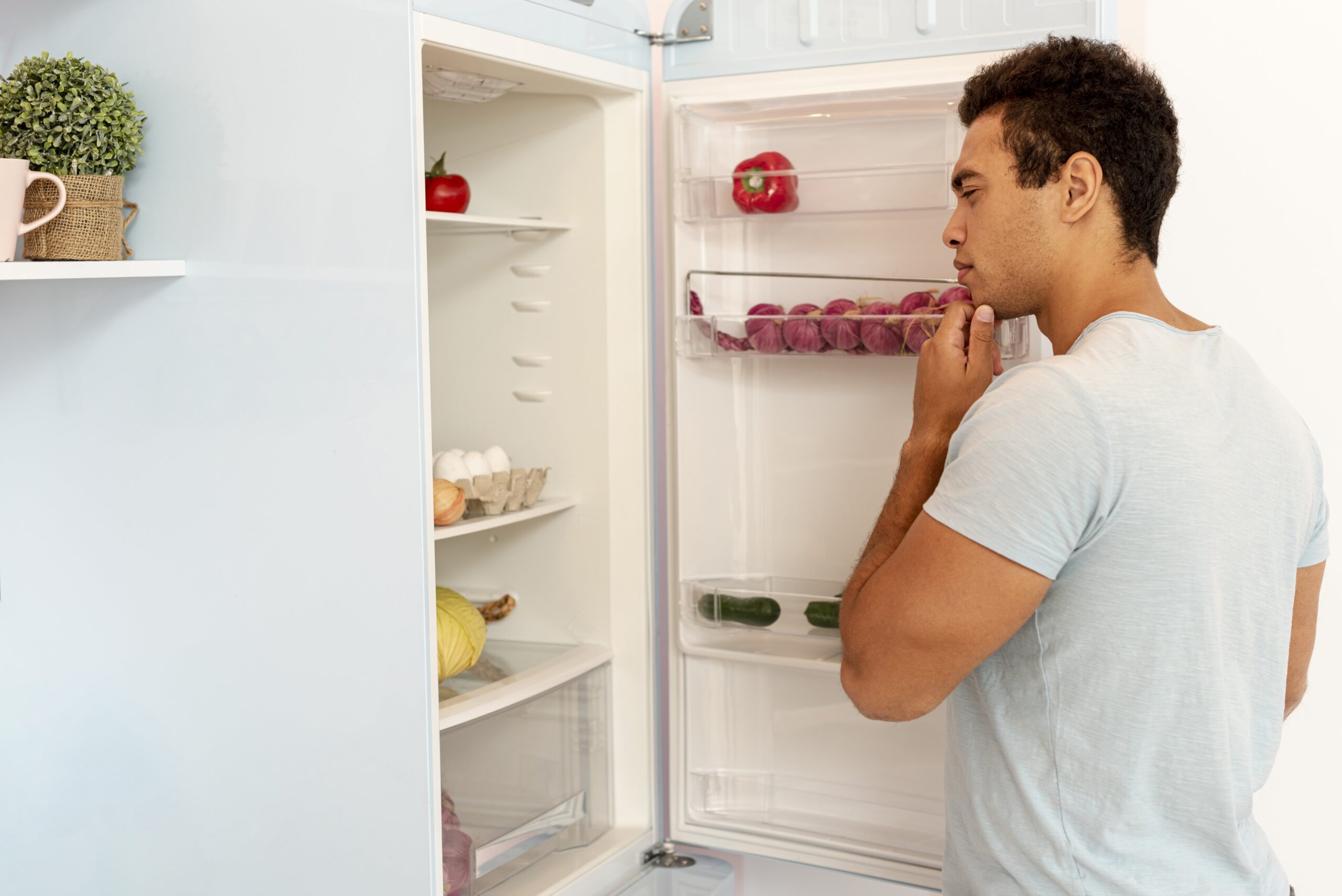Why is My Freezer Working But Not My Fridge [ A Complete Guide ]

Unlocking the Mystery: Freezer Works, Fridge Doesn’t! Discover the Causes & DIY Fixes to Revive Your Refrigerator’s Chill. Don’t Let the Cold Fade Away – Get Your Fridge Back on Track Today!
Understanding Refrigerator Mechanics
Brief Explanation of How Refrigerators Work:
The laws of thermodynamics and heat transfer govern how refrigerators work. In order to absorb and release heat and produce a cooling effect, they use a refrigerant, usually a gas, that goes through a cycle of compression and expansion. Compressor, condenser, evaporator, and expansion valve are the main elements in this process.
Differentiating Between Freezer and Fridge Compartments:
The freezer and the refrigerator are the two main sections of the refrigerator. The freezer’s objective is to keep temperatures much lower than the refrigerator. It keeps frozen food storage temperatures at or below 0 degrees Fahrenheit (-18 degrees Celsius). To keep perishable items cool but not frozen, the fridge compartment operates at a higher temperature, typically between 37 and 41 degrees Fahrenheit (2.8 to 5 degrees Celsius).
Role of the Evaporator Coils and Fans in Each Section:
In both the freezer and fridge compartments, there are evaporator coils responsible for absorbing heat from the air inside. Refrigerant absorbs heat as it evaporates in the coils. The compressor then releases the absorbed heat into the surrounding air through the condenser coils.
In the freezer, the cooled air produced by the evaporator coils is typically distributed by a fan to ensure even cooling and to prevent ice buildup. This fan helps maintain the freezer’s low temperature and circulates air throughout the freezer compartment.
For the fridge compartment, some refrigerators have a separate evaporator and fan to circulate cool air specifically for this section. In others, a damper or vent controls the flow of cold air from the freezer to the fridge. The thermostat in the fridge monitors the temperature and activates the compressor and fans as needed to maintain the desired cooling level.
Possible Causes of the Issue
When your freezer is working, but your fridge isn’t cooling, several factors could be responsible for this frustrating problem. Understanding these potential causes can help you diagnose and resolve the issue effectively. Here are some common culprits:
Blocked Airflow:
Ice Buildup in the Freezer: Excessive frost or ice accumulation on the evaporator coils can obstruct airflow and prevent cold air from reaching the fridge compartment.
Obstructed Vents: Blocked vents or air passages between the freezer and fridge can impede the flow of cold air into the refrigerator, causing it to remain warm.
Faulty Components:
Malfunctioning Evaporator Fan: If the fan that circulates cold air from the freezer to the fridge fails to operate, the fridge compartment may not receive adequate cooling.
Defective Thermostat or Temperature Sensor: A faulty thermostat or temperature sensor may not signal the compressor and fans to turn on, leading to insufficient cooling in the fridge.
Damaged Compressor: The compressor is the heart of the refrigeration system. If it is faulty or damaged, it won’t properly circulate the refrigerant, affecting both the freezer and fridge compartments.
Inadequate Power Supply:
Electrical Issues: Problems with the power supply, such as a blown fuse or a tripped circuit breaker, can disrupt the refrigerator’s functioning and cause cooling irregularities.
Troubleshooting Steps
When your freezer is working, but your fridge isn’t cooling, you can follow these troubleshooting steps to pinpoint the problem and attempt to resolve it:
Checking for Visible Obstructions:
Defrost the Freezer: If there’s excessive ice buildup on the freezer’s evaporator coils, unplug the refrigerator and allow the ice to melt. You can speed up the process by placing a bowl of warm water inside the freezer.
Clearing Vents: Inspect the vents and air passages between the freezer and fridge compartments. Remove any debris or obstructions that may be hindering the flow of cold air.
Testing Internal Components
Listen for Unusual Sounds: When you turn on the refrigerator, listen for any unusual noises coming from the back or bottom. Strange sounds may indicate a malfunctioning compressor or fan.
Use a Multimeter: If you have experience with electrical testing, you can use a multimeter to check the continuity of the thermostat and temperature sensor. Ensure they are functioning correctly.
Verifying Power Supply:
Check Power Outlet: Make sure the refrigerator is properly plugged into a functioning power outlet. To ensure that the outlet is providing power, use another device to test it.
DIY Solutions and Fixes
If your freezer works but your fridge doesn’t cool, try these DIY solutions: manually defrost the freezer by unplugging the refrigerator, removing perishables, and using hot water or a hairdryer; replace the faulty evaporator fan or temperature sensor following guidelines; check and secure electrical connections, and replace blown fuses or reset circuit breakers if necessary. However, ensure safety and consider professional help for complex tasks like compressor replacement. Prioritize safety and seek expert assistance if DIY efforts don’t fix the issue, ensuring both compartments regain optimal cooling.
When to seek professional help
Knowing when to seek professional help is crucial. Call a qualified appliance repair technician for complex repairs, safety concerns, lack of DIY experience, unsuccessful DIY attempts, and warranty coverage. They have the expertise to diagnose and fix issues efficiently, ensuring both freezer and fridge compartments work optimally, while also providing peace of mind and saving you time.
Conclusion:
In conclusion, when facing the issue of a working freezer but a non-cooling fridge, it’s essential to understand the mechanics of your refrigerator and the possible causes behind the problem. Through systematic troubleshooting, you can identify common culprits like blocked airflow, faulty components, or inadequate power supply. Utilizing DIY solutions, such as defrosting the freezer or replacing damaged parts, may help resolve the issue. However, if you encounter complex repairs, lack DIY experience, or have safety concerns, it’s best to seek professional help. A qualified technician can diagnose and fix the problem efficiently, ensuring both compartments regain their proper cooling function. By prioritizing safety and seeking expert assistance when needed, you can extend the lifespan of your refrigerator and enjoy reliable cooling for your food storage needs.



